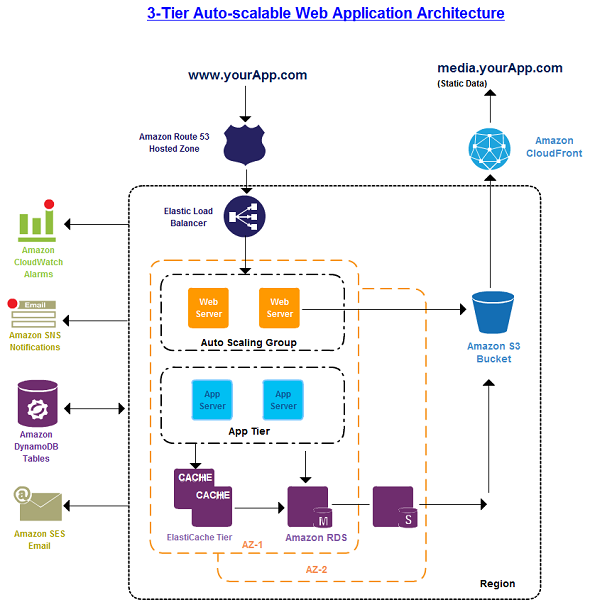

For example, use US East (Ohio) and US West (Oregon) to operate your application on the east and west coast in parallel. That’s one of the approaches to avoid failures to cause outages affecting the whole region.ĭepending on your availability requirements, you might need to deploy your application among multiple regions. Is it necessary to deploy your application to multiple regions? As discussed in the previous section, AWS partitions their regions into isolated availability zones.

In my example, I’m using Auto Scaling Groups to make sure EC2 instances are distributed among two Availability Zones. Multi-AZ optional: ALB, RDS Aurora, EFS, Auto Scaling.Multi-AZ by default: Route 53, CloudFront, S3, SQS.You have to find a way to recover operation in another AZ in case of a disaster on your own. In that case, you need to know that AWS does not even offer an SLA for EC2 instances running in a single AZ only. Be aware that it might not be possible to operate a legacy application on more than one machine at the same time. Make sure to distribute the EC2 instances among at least two AZs in parallel. Make sure you have specified Multi-AZ as a requirement for services that come with a built-in option for Multi-AZ deployments.ĭouble-check whether your application is running on multiple EC2 instances. However, make sure you have verified that information with the help of the AWS documentation. There is no action needed for services that are operating among multiple AZs by default. Services that you need to deploy among multiple AZs yourself.Services that come with a built-in option for Multi-AZ deployments.Services that are operating among multiple AZs by default.An availability zone consists of one or multiple isolated data centers. Is every component distributed among at least two availability zones? AWS partitions their regions in so-called availability zones (AZ). Elastic File System (EFS) a network file system (NFS).Relational Database Service (RDS) Aurora a PostgreSQL-compatible database.Simple Queue Service (SQS) a message queue.Auto Scaling Group manages a fleet of EC2 instances.Application Load Balancer (ALB) distributing incoming HTTPS requests among a fleet of EC2 Instances.Simple Storage Service (S3) an object store.CloudFront a Content Delivery Network (CDN).Route 53 a globally distributed Domain Name System (DNS).My architecture is made up of the following components: The architecture shows a typical web application consisting of a layer for synchronous request processing and a layer for asynchronous job processing. I’ve created an AWS diagram with Cloudcraft and will use the following architecture as an example when going through my AWS Architecture Checklist. Make sure that you haven’t forgotten any important aspects. Good job! This blog post contains a checklist helping you to validate your architecture. After analyzing the requirements of your application, you came up with an AWS architecture.


 0 kommentar(er)
0 kommentar(er)
